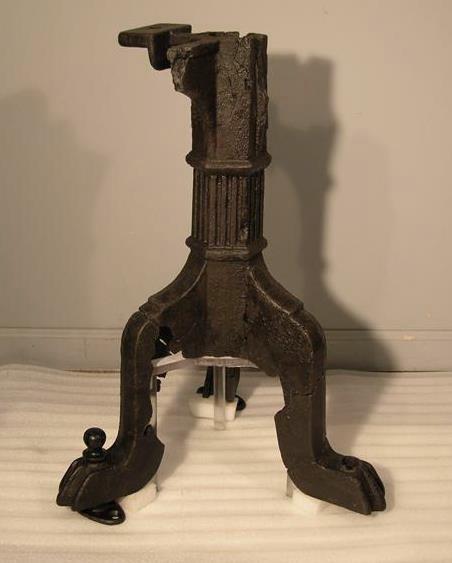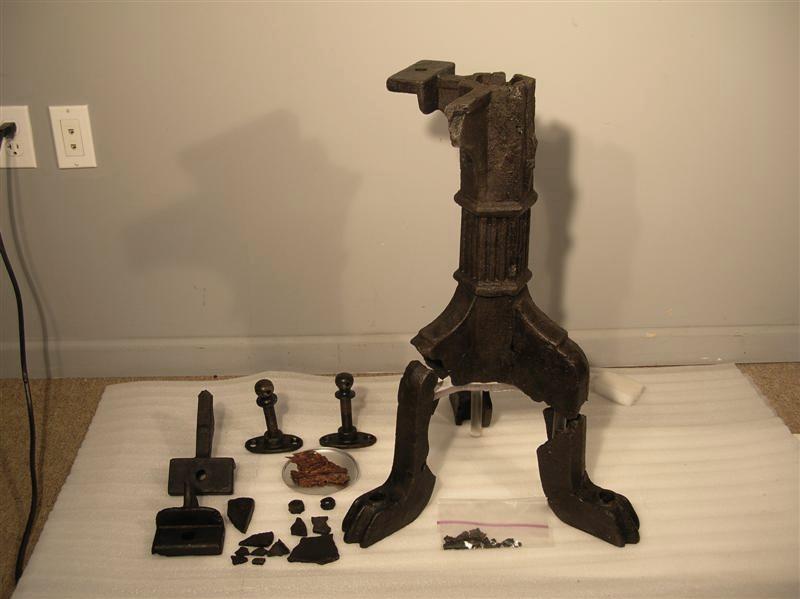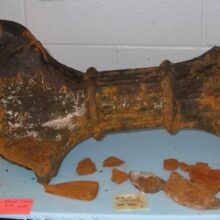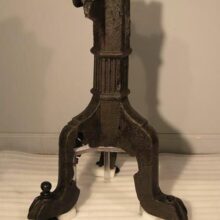RMS Titanic Cast Iron Table Base
On Sunday, 14 April, 11. 40 pm, the R. M. S. Titanic struck an iceberg. By 2. 20 am on Monday 15 April, Titanic sank in the cold Atlantic Ocean. The Titanic presently rests 12,460 feet (2. 5 miles) below the surface of the North Atlantic Ocean, 450 miles southeast of Newfoundland. The bow and stern are separated by 2,000 feet, their contents scattered, forming the vast debris field.
Our conservation team worked closely with Premier Exhibitions, Inc. (formerly R. M. S. Titanic, Inc.), the salvor-in-possession, to preserve the collection. Preservation included providing services such as complete treatments, periodic assessments, maintenance of touring artifacts, display mount design and fabrication, and consultation.
In 2006, we carried out the treatment of a cast iron table base. After recovery in 2000, the table base was desalinated over a period of several years. Final treatment included cleaning, stabilization, coating with a protective wax, re-assembly of the many fragments, and design of a suitable mount for exhibition display. As the artifact is extremely fragile due to the graphitized condition of the iron, the mount was designed to reduce the necessity for repeated handling when the object is crated and uncrated between traveling exhibits, and minimize the number of attachment points which would stress the object. We designed a mount consisting of a Lexan® dowel, disk and legs with added Ethafoam® padding. Not all parts of the table base were reassembled, allowing them to delicately rest against the mount. All handling of the larger portion of the table base is by the mount. The mount also functions to support the table base during travel.





